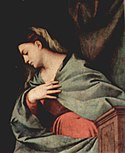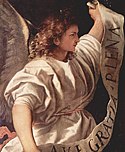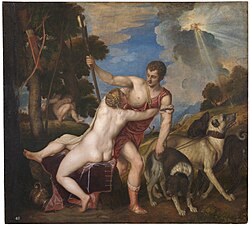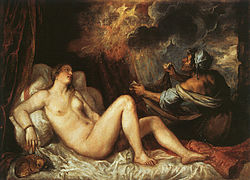Frari (Venice) nave right - Monument of Titian
Autor/Urheber:
Attribution:
Das Bild ist mit 'Attribution Required' markiert, aber es wurden keine Informationen über die Attribution bereitgestellt. Vermutlich wurde bei Verwendung des MediaWiki-Templates für die CC-BY Lizenzen der Parameter für die Attribution weggelassen. Autoren und Urheber finden für die korrekte Verwendung der Templates hier ein Beispiel.
Shortlink:
Quelle:
Größe:
5546 x 4813 Pixel (17486214 Bytes)
Beschreibung:
The Basilica di Santa Maria Gloriosa dei Frari, monument to Titian. Titian had wished to be buried in the Basilica of the Frari. He was buried at the monument dedicated to him on August 27, 1576. The monument is made of Carrara marble, it is due to the work of the brothers Luigi and Pietro Zandomeneghi, Canova disciples. The mausoleum is situated at the foot of the cross for which Titian made his last work, the Pietà, currently on display at the Academy. At the center of the monument: the statue crowned with laurels Titian is accompanied by the allegories of universal nature, the spirit of knowledge, in addition to painting, sculpture, graphic arts and architecture. At the base, the statue of Charles V and Ferdinand I of Austria, the two emperors for which he had worked. On the bottom five reliefs recall the most important religious works of the artist: the Assumption in the center, Peter of Verona to the left, the martyrdom of St. Lawrence on the right; The entablature above the right Visitation and the Descent from the Cross to the left. At the top of the monument stands the Lion of St.Marc with the coat of arms of the Habsburgs. The monument was restored in 1996.
Kommentar zur Lizenz:
Ich, der Urheber dieses Werkes, veröffentliche es unter der folgenden Lizenz:
Lizenz:
Relevante Bilder
Relevante Artikel
TizianTizian gilt als der führende Vertreter der venezianischen Malerei des 16. Jahrhunderts und einer der Hauptmeister der italienischen Hochrenaissance. Zu Lebzeiten wurde er oft nach seinem Geburtsort Da Cadore genannt. .. weiterlesen










































